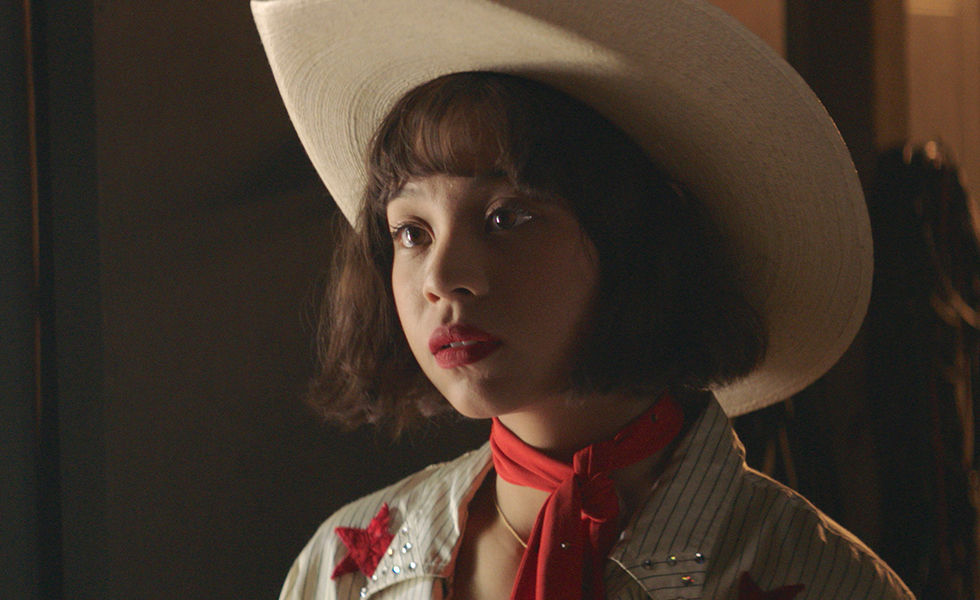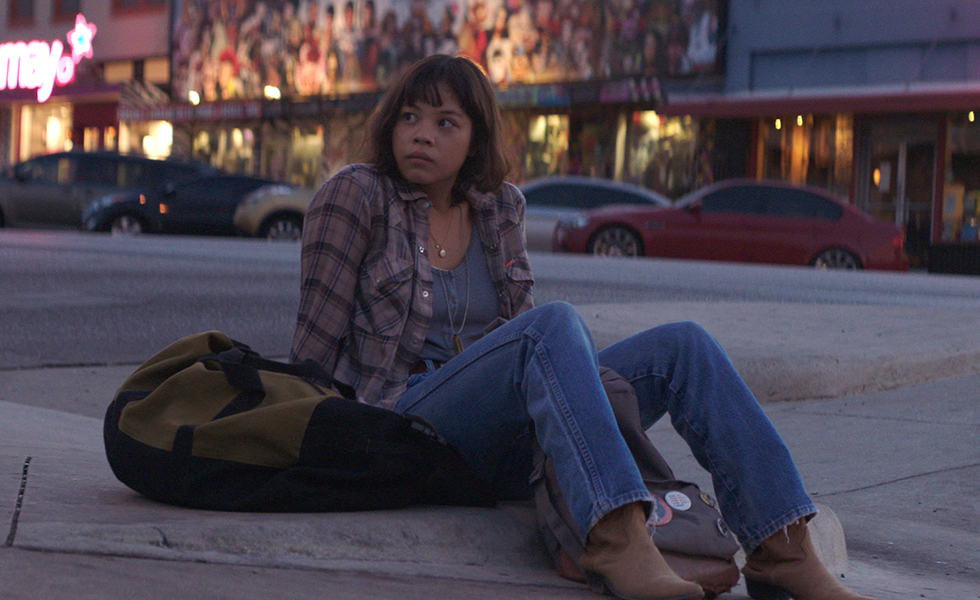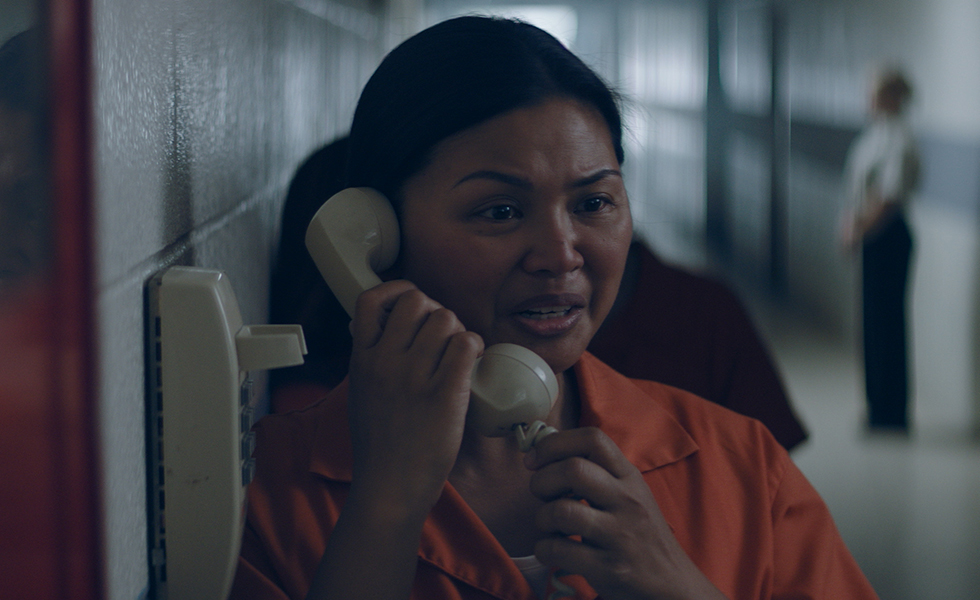
In ‘Yellow Rose,’ the American Coming-of-Age Story Finally Includes Undocumented Youth
Set in Austin, the film tracks a Filipina teen dreaming of a country music career—and fighting to keep her family together.
“I never fit in,” croons Rose Garcia in one of the early scenes of Yellow Rose. For the young protagonist—a Filipina teen who sports a cowboy hat and blows off homework to pen songs—the lyrics land just a tad on the nose. From the moment she appears onscreen in Diane Paragas’ feature film, Rose (played by Eva Noblezada) is something of a sociocultural rarity: cruising on her bike through the streets of a small town on the outskirts of Austin, absorbed in the country tunes flowing through her headphones, heading to the rundown motel where she stays with her single mother who works as a housekeeper.
Much like its heroine, Yellow Rose defies categorization. It’s equal parts musical, family drama, coming-of-age story, and timely political commentary. The film, which screens at the Houston Cinema Arts Festival on November 15, is the feature debut from Paragas, a Filipino American who grew up in Lubbock and graduated from the University of Texas at Austin. Yellow Rose tackles several under-explored subjects that could each carry a feature: a Filipina striving to break into the country music scene, an undocumented Asian family struggling to carve out a life in the United States, a budding interracial teen romance. As the film interweaves these narrative threads into a cohesive storyline, viewers may feel a slight sense of thematic whiplash. A powerful sequence juxtaposes a date night at Austin’s iconic honky-tonk the Broken Spoke with the visceral devastation of Rose’s mother’s abrupt arrest and detainment by ICE. It’s a striking emotional 180 that leaves both the film’s characters and audience reeling.

But for her immigration status, Rose’s character would not be out of place in a lineup of plucky teen girl protagonists of American cinema. She’s a starry-eyed artist with lofty hopes of striking it big, a slightly rebellious teen chafing against the constraints imposed by her conservative mother, an endearing misfit who catches the eye of a sweetly awkward love interest.
Yet Rose is also burdened with the knowledge that her seemingly stable existence can be torn from her without a moment’s notice, which makes the tonal dissonance of Yellow Rose effective. On her first day at a new job, Rose befriends a fellow undocumented coworker, only to see the establishment raided by ICE and her friend detained the next day—narrowly avoiding the same fate herself. Scenes of Rose scribbling lyrics in notebooks, sneaking out for drinks, and awkwardly navigating teen romance feel like they’ve been lifted from a conventional bildungsroman, while the bleak depiction of her mother’s stay in an ICE detention center and the heartbreak of their too-brief, institutionally oppressed reunion are reminiscent of poignant, family-centered incarceration dramas.
Despite remaining in development for over 15 years, Yellow Rose enters the pop culture zeitgeist as illegal immigration continues to be one of the most common and polarizing subjects nationwide. The film does the crucial work of bringing undocumented Asian Americans to the forefront of a national conversation on what is seen as a predominantly Latin American issue—despite an estimated 1 in 7 Asian immigrants identifying as undocumented, as reported in a 2015 study by the Asian American Center for Advancing Justice. Yellow Rose adds a new dimension to Asian representation in American media, subverting narratives of the privileged lifestyles of the “model minority” in favor of a reality that’s at once harsh, unfamiliar, and of vital importance.

Yellow Rose is not without flaws. The film’s white cast is spared the cliché of being an assemblage of bigoted Southerners, but it veers too far in the other direction. A few characters and the sheer magnanimity of their actions—from the matronly bar owner who knows Rose only as an underage drinker yet offers her a job and a place to stay after learning she’s undocumented, to the veteran country star (played by Dale Watson) who helps the budding young singer cultivate her talent and lets her live in his backyard Airstream rent-free—sometimes strain credulity.
Nevertheless, the shortcomings of Yellow Rose are overshadowed by its authentic, earnest depiction of characters and narratives rarely given a voice in mainstream media. The film’s principal themes—the trials and triumphs of living undocumented, the interaction between the traditionally white, masculine arena of country music and the diverse generation that stands to inherit it—all explore socially relevant topics that many Americans are aware of only peripherally. All too often, these issues are oversimplified and relegated to the black-and-white arena of political debate. We’re in dire need of media that presents thoughtful, nuanced depictions of hot-button issues such as immigration, not as a morality tale but in the service of a great story. Unquestionably, Yellow Rose does just that.
Read more from the Observer:
-
The Movement to Free Rodney Reed Illustrates the Growing Unease Over Texas’ Use of the Death Penalty: Deafening calls to spare Rodney Reed’s life point to a larger distrust in Texas’ use of the death penalty and an erosion of confidence in the justice system that convicted him.
-
Scenes from a Rural Hospital’s Final Day: Chillicothe Hospital closed its doors on July 22. Its closure reverberated through the community in both expected and surprising ways.
-
Having My Period in Prison Was Awful. In Texas, That May Finally Change: When I was locked up, I often had to go without tampons or pads. A new law ensures that the 12,500 women still behind bars won’t have to.


